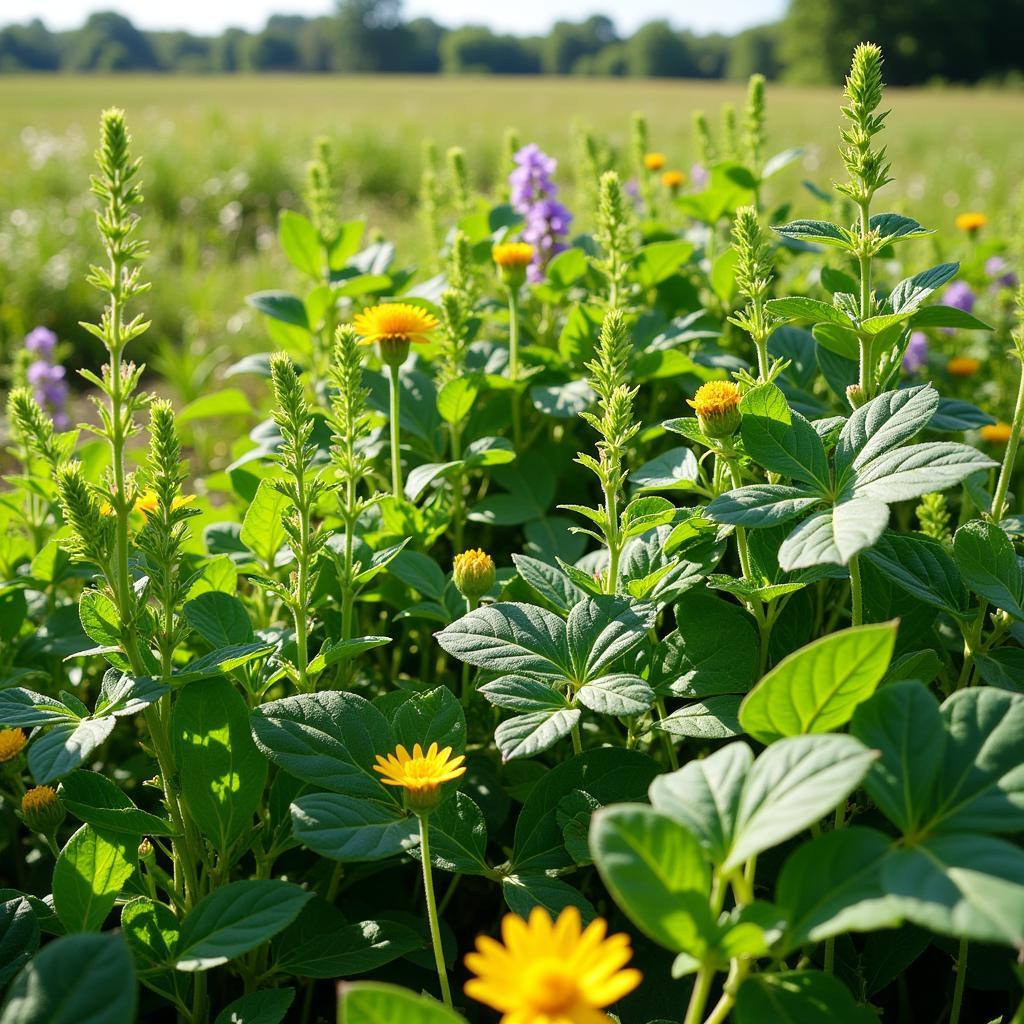Spring and summer food plots are crucial for maintaining a healthy deer population and ensuring they have access to nutritious forage during these critical growth periods. Providing high-quality food sources through carefully planned and maintained food plots not only benefits the deer but also enhances the hunting experience come fall. Understanding the deer’s nutritional needs and selecting the right plants for your region and soil type are key factors in successful food plot management.
A successful spring and summer food plot strategy involves choosing plants that thrive in warmer weather and provide the necessary nutrients for antler growth, fawn development, and overall herd health. Legumes like clover and alfalfa are excellent choices, as they are high in protein. Consider incorporating a spring food plot mix for a diverse and nutritious food source. Proper soil preparation and weed control are also essential for maximizing the effectiveness of your food plots. Planting at the right time, considering your local climate and the specific needs of the chosen plants, will ensure optimal growth and forage availability.
Choosing the Right Plants for Spring and Summer Food Plots
Selecting the right plant species is paramount for the success of your spring and summer food plots. Factors like soil type, climate, and deer preferences in your area should guide your choices.
Warm-Season Forage Options
Warm-season annuals like soybeans, cowpeas, lablab, and sorghum are popular choices for summer food plots, offering high protein and energy content. These plants thrive in the heat and provide excellent forage throughout the summer months. Perennials like clover and alfalfa can also be planted in spring and will continue to provide forage into the summer. A no till clover food plot can be a great option for minimizing soil disturbance and promoting healthy growth.
Consider incorporating brassicas like turnips, radishes, and rape for late summer and early fall grazing. These cool-season plants can be planted in late summer and provide a nutritious food source as the weather starts to cool.
 Spring and Summer Food Plot Mix
Spring and Summer Food Plot Mix
Understanding Soil pH and Fertility
Testing your soil is crucial before planting any food plot. Understanding your soil’s pH and nutrient levels will help you determine which plants are best suited for your land and what amendments might be necessary. A soil test can be obtained through your local agricultural extension office.
Planting and Maintaining Your Food Plots
Proper planting techniques and ongoing maintenance are vital for maximizing the productivity of your spring and summer food plots. Preparing the soil adequately, planting at the correct depth and spacing, and managing weeds effectively will ensure healthy plant growth and abundant forage.
Preparing the Seedbed
Soil preparation is critical for successful food plot establishment. Plowing or tilling the soil helps loosen it, allowing for better root penetration and water infiltration. Consider incorporating organic matter like compost or manure to improve soil fertility and structure. A spring food plot requires proper seedbed preparation for optimal results.
Weed Control Strategies
Weeds can compete with your food plot plants for resources, hindering their growth and reducing overall yield. Implementing effective weed control strategies, such as herbicides or mechanical methods like mowing or cultivating, is essential for maintaining a healthy and productive food plot.
“A well-maintained food plot can significantly improve deer health and antler development,” says Dr. Sarah Miller, a wildlife biologist specializing in deer nutrition. “Providing a diverse and nutritious food source during spring and summer is essential for supporting the deer population throughout the year.”
Benefits of Spring and Summer Food Plots
Investing in spring and summer food plots yields numerous benefits, including improved deer health, increased antler growth, and a healthier deer herd overall. Attracting and holding deer on your property enhances hunting opportunities and contributes to a more rewarding hunting experience.
Impact on Deer Health and Antler Growth
Providing readily available, high-quality forage during spring and summer ensures deer have the nutrients they need for optimal antler growth, fawn development, and overall health. This can lead to larger, healthier deer and a more robust population. Knowing how many deer will a 1 acre food plot support can help you plan accordingly.
 Healthy Deer in a Food Plot
Healthy Deer in a Food Plot
“Spring and summer food plots are like a nutritional buffet for deer,” adds John Thompson, an experienced wildlife manager. “By offering a variety of nutritious plants, we can ensure they’re getting everything they need to thrive.” Consider a food plot for turkeys to provide additional food sources for other wildlife.
Conclusion
Establishing and maintaining effective spring and summer food plots is a crucial aspect of deer management. By carefully selecting the appropriate plants, implementing proper planting and maintenance techniques, and understanding the nutritional needs of deer, you can contribute to a healthier and more robust deer population, while also enhancing your hunting opportunities. Spring and summer food plots offer a significant return on investment for landowners and hunters alike.
FAQ
- What are the best plants for spring food plots?
- When should I plant my summer food plot?
- How do I control weeds in my food plots?
- What is the importance of soil testing for food plots?
- How much land do I need for a successful food plot?
- What are the benefits of planting a spring and summer food plot mix?
- How do spring and summer food plots improve deer antler growth?
If you need any assistance, please contact us via Phone: 02437655121, Email: minacones@gmail.com Or visit our address: 3PGH+8R9, ĐT70A, thôn Trung, Bắc Từ Liêm, Hà Nội, Việt Nam. We have a 24/7 customer service team.